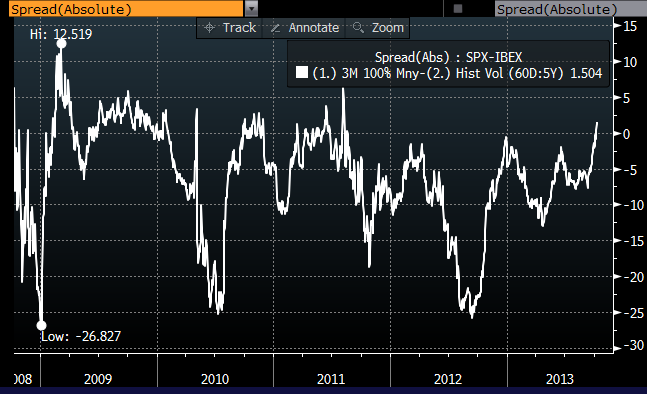 Investing is often portrayed as a numbers game, where success boils down to returns and volatility. Yet, beneath the surface lies a crucial concept that many investors — and even seasoned professionals — fail to grasp: sequence risk.
Investing is often portrayed as a numbers game, where success boils down to returns and volatility. Yet, beneath the surface lies a crucial concept that many investors — and even seasoned professionals — fail to grasp: sequence risk.
This often-overlooked factor can have a six-or even seven-figure impact on your financial future, especially when it comes to retirement planning.
Sequence risk is a phenomenon that can overshadow average returns and volatility in shaping your financial reality. At its core, sequence risk refers to the order in which investment returns occur.
While most investors focus on average returns over time, the timing of these returns can profoundly influence your end wealth. This concept applies across two critical life phases: the accumulation phase (when you’re saving and investing) and the decumulation phase (when you’re withdrawing funds in retirement).
Breaking it down
Imagine a 30-year-old investor with £10,000 saved and the ability to invest £500 per month — a reasonable, though optimistic, assumption. Let’s further assume they earn a steady 7.5% annual return over 30 years, roughly in line with historical equity market performance for a decent number of developed markets. Now, introduce a single market crash during this period, where the portfolio drops by 38% — similar to the 2008 financial crisis.
Sequence risk is a phenomenon that can overshadow average returns and volatility in shaping your financial reality
Here’s how the sequence of this crash affects the outcome: If the crash occurs at 31 years old, early in their investing journey, the investor ends up with c.£671,000 by age 60. But if it happens at 59 years old, just before retirement, the portfolio value drops to c.£411,000.
In contrast, avoiding a major crash entirely results in a pot of over £783,000. This stark difference — nearly 40% less wealth for someone who experiences a crash late versus early — underscores the power of sequence risk. The earlier a crash occurs, the more time there is to recover, compounded by ongoing contributions and subsequent market gains.
Diverging paths
The impact of sequence risk can be even more pronounced during retirement, when you’re no longer contributing to your portfolio but instead withdrawing from it. Take the example of a 60-year-old retiree with a £500,000 portfolio, withdrawing £25,000 annually to fund living expenses.
Now assume the same 7.5% average return and one 38% crash. If the crash occurs at 61 years old, the retiree runs out of money by age 80. However, if it happens at 80 years old, they still have £783,000 by 90. Without a crash, the portfolio grows to over £1.5m by age 90.
These numbers reveal a critical truth: experiencing a crash early in retirement can deplete your portfolio far faster than later in life. This is because withdrawals during a downturn permanently erode the portfolio’s value, leaving less capital to recover when markets rebound.
Despite its importance, sequence risk rarely makes headlines or financial brochures
Despite its importance, sequence risk rarely makes headlines or financial brochures. The investment industry focuses on average returns and volatility metrics because they’re easier to quantify and market. Analysing sequence risk requires a very long-term perspective — often spanning decades — that doesn’t align with the short-term focus of many fund managers and financial advisers, who tend to focus on 3-5 year performance numbers.
Adaption strategies
Mitigating sequence risk involves strategies that may not showcase spectacular short-term returns, such as diversifying across asset classes, adopting lower-risk investments closer to retirement and maintaining cash reserves to avoid withdrawing during market downturns.
To protect against sequence risk, there are number of strategies. Arguably central is to diversify your portfolio and include a mix of asset classes like bonds, equities and alternative investments to reduce exposure to market downturns.
One of the most durable ideas in investment, which seeks to help you get the blend roughly right, is often called “100 minus your age” – frequently credited to John Bogle, the founder of Vanguard.
For some decades, many financial advisers and smart investors have used a basic rule of thumb that says that the percentage you invest in risky/aggressive assets such as equities should be “100 minus your age”, with the rest being held in lower risk/defensive assets – such as cash or bonds.
In the accumulation phase, these percentages give you an idea of how much you might invest each month into those respective assets. In the decumulation phase (when you’re no longer investing each month but seeking to live on your pot), they can give you a rough idea of how that pot should be allocated overall.
One of the most durable ideas in investment is often called ‘100 minus your age’
For example, if you are 30, you might invest roughly 70% of what you can afford each month into higher-return investments such as shares, and around 30% in more defensive assets. If you are 70, you might have only 30% of your pot in riskier, higher-return assets and 70% in lower-risk assets.
If you take this approach, you probably then only need to review your investing plan every five years or so – perhaps on the occasion of your 30th, 35th, 40th, 45th etc… birthdays.
For example, a 40-year-old might allocate 60% of what they can afford to invest each month to higher-risk assets and 40% to lower-risk ones for the next five years. At 45, they would then tweak this to 55% into higher-risk assets and 45% lower risk for the next five years and so on.
Some market commentators have suggested that the rule might evolve to “110 minus” or even “120 minus your age” to account for longer lifespans and careers for white-collar workers, and potentially higher-risk tolerance during retirement overall, particularly in a lower-interest-rate environment where defensive assets have tended to yield less than in the past when the idea was first conceived.
Ignore at your peril
This sort of approach can help reduce the financial impact of a poorly timed market crash, safeguarding your wealth for the long term. While sequence risk is seldom discussed by the industry, it is arguably one of the most important factors in achieving financial success in the long run. Ignoring it can lead to devastating consequences, especially for those on the brink of retirement.
By addressing sequence risk in your investment strategy, you’re planning for real-world outcomes
Yet, understanding and planning for sequence risk can help ensure that your financial goals remain intact, regardless of market volatility. By addressing sequence risk in your investment strategy, you’re not just focusing on shorter-run performance numbers — you’re planning for real-world outcomes.
Whether you’re 30 and starting your investment journey or 60 and entering retirement, this concept is too important to ignore. The next time you evaluate your financial plan or review your portfolio, remember: it’s not just about how much you earn — it’s about when you earn it.
Sequence risk matters, and understanding it today can help you secure a brighter, more stable financial future tomorrow.
Andrew Craig is founder of Plain English Finance














Comments